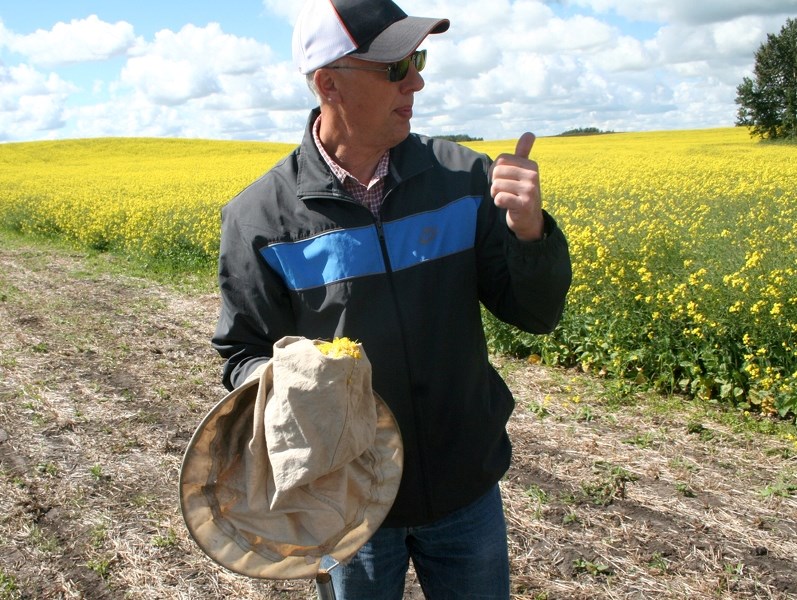An oilseed specialist from Alberta Agriculture offered farmers in the area some valuable information at last week’s Lakeland Agricultural Research Association (LARA) field day, held on July 30 near St. Paul.
LARA looks to help farmers with the most applicable, relevant agricultural research possible. One of the ways in which they relay this information is through its agricultural field days.
“We held the field day to show what kind of research we’re doing on crops. The research is producer oriented. We really value what producers want to see in our trials, and encourage them to make suggestions and comments on what we find,” says Alysse Krone, a forage and livestock specialist with LARA, at the event last week.
She adds, “With this field day, we demonstrated to local farmers what can be done to prevent fungal diseases like blackleg and sclerotonia.”
Small crops were arranged into groups, in different numbers of rows, with different varieties of canola plants arrayed. Murray Hartman, an oilseed specialist with Alberta Agriculture explained the benefits and costs of using particular varieties of canola plants, and the patterns of growth using varieties in certain conditions yielded.
The field day was meant to relay the data collected from LARA’s crop research, and to show local farmers what variety of canola plants would yield the best crop and be the most resistant to disease and insects.
One of the recommendations made by Hartman was that farmers change up the variety of canola they plant, and avoid using the same one every year.
Hartman also demonstrated how to identify the signs of blackleg through cutting open a sample plant’s stem, and showed how to identify the presence of certain pests through a sweep, using a net.
Krone explains that the field day also showed the results of a fertilizer trial in which LARA used different amounts of nitrogen to fertilize plants, so that they could take note of the variance between amounts of nitrogen used on different plants, and what worked best, relative to the recommended amount of nitrogen needed for fertilizer.
Overall, “the crops are okay this year,” says Hartman. “They were a little late at the last site, which will make things a little challenging in the fall for the people growing them, but all-in-all, there are no major problems this year.”
He adds, “There’s no signs of any big amounts of disease or insect issues that I could identify. There are warnings to certain at-risk, individual areas, to watch out for bertha army worms where the trap counts are high. And even in those areas, it’s more a matter of canola producers being aware of the problems that could come along. Overall, things are going smoothly in terms of pest and disease control.”
“Everything went well and we got everything covered,” says Krone of the field data. “Murray’s a great speaker. You learn a lot. In fact, you learn just how much you don’t know about canola when you listen to Murray. I appreciate everyone coming out and asking the questions they asked.”



